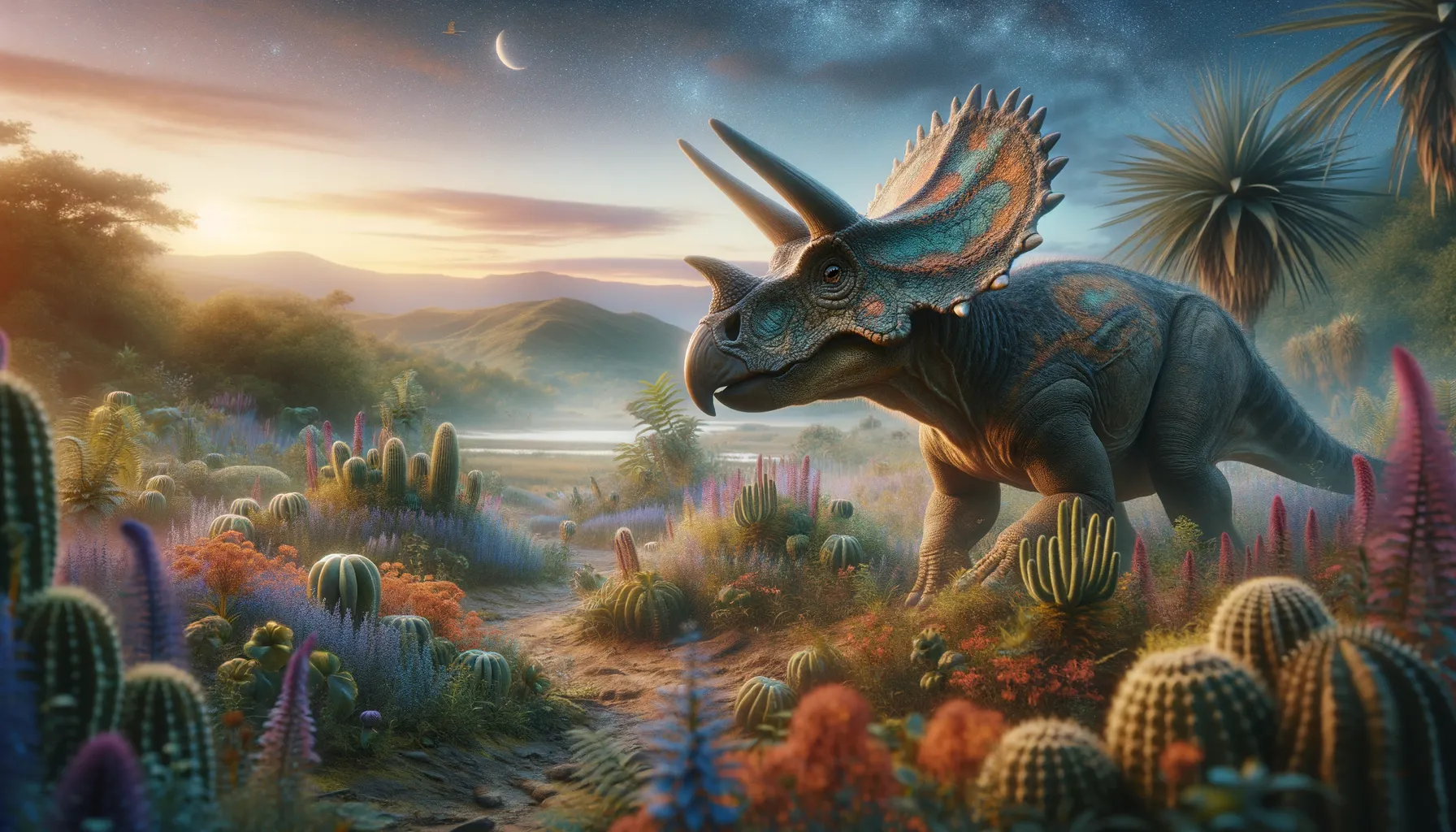
Gryphoceratops
Small yet mighty in the dinosaur realm.
Period
Cretaceous
Length
About 1.5 meters long.
Height
Around 60 centimeters at the shoulder.
Weight
Approximately 50 kilograms.
Gryphoceratops was a small ceratopsian dinosaur that roamed North America during the Cretaceous period. Though diminutive compared to larger relatives, it displayed characteristic features of its group, including a beaked face. Fossil evidence has placed it among the diverse fauna of the region, offering insights into its behaviors and adaptations.
Diet
Gryphoceratops was herbivorous, feeding on a variety of plants in its Cretaceous habitat. Its beak was well-suited for clipping vegetation, suggesting a diet that included ferns and other ground cover.
Hunting
Gryphoceratops did not hunt, as it was a plant-eater. Instead, it focused on foraging through the dense underbrush, using its beak to nip off pieces of foliage.
Environmental challenges
As a small herbivore, Gryphoceratops faced threats from predators, requiring it to be vigilant. It lived in an environment that experienced seasonal changes, which could affect food availability. Adaptations like its beak helped it to exploit a wider range of plants, aiding survival in varied conditions.
Speed
Likely slow due to its small size.
Lifespan
Exact lifespan unknown, but similar species lived around 10-20 years.
First discovery
Discovered in Alberta, Canada, in 2012 by Michael J. Ryan.
Fun Facts
- Gryphoceratops is one of the smallest known horned dinosaurs, roughly the size of a rabbit.
- It lived during the Late Cretaceous period, about 83 to 70 million years ago.
- Gryphoceratops was discovered in Canada, specifically, the Dinosaur Provincial Park in Alberta.
- Its name means 'griffin horned face,' reflecting its horned features and mythological inspiration.
- Unlike its larger relatives, Gryphoceratops likely ate low-lying plants.
- The dinosaur is part of the group Leptoceratopsidae, which is known for containing small, beaked herbivores.
- It had a parrot-like beak, adapted for trimming vegetation.
Growth and Development
Gryphoceratops likely grew rapidly during its early years to avoid predation. Fossils suggest it underwent significant skeletal changes as it matured. Understanding its ontogeny provides clues about its adaptation strategies and life history.
Habitat
Gryphoceratops inhabited lush floodplain environments rich in vegetation. The Cretaceous landscape was dotted with rivers and forests, providing ample cover. This habitat supported a diverse community of plant life, which sustained the herbivorous diet of Gryphoceratops.
Interaction with other species
Gryphoceratops likely shared its environment with other herbivores and carnivores, including larger ceratopsians and theropods. These interactions would have shaped its behaviors, possibly leading to group living for protection. Competition for food may have been intense, especially in drier seasons.
Natural lifespan
Gryphoceratops could live up to 20 years if it avoided predation.
Reproduction
Gryphoceratops likely laid eggs, similar to other ceratopsians. Nesting behaviors might have included selecting safe locations to protect their young from predators. Parental care post-hatching is speculated, though not confirmed by fossil evidence.
Social behaviour
Gryphoceratops may have lived in small groups for protection. Social structures might have played a role in foraging and predator defense. Interaction signals possibly included visual displays and vocalizations.
Fossil locations
Fossils of Gryphoceratops were primarily found in Alberta, Canada. These discoveries contribute to understanding the dinosaur's geographical distribution. Such findings illuminate the diversity of ceratopsians in North America during the Cretaceous period.
